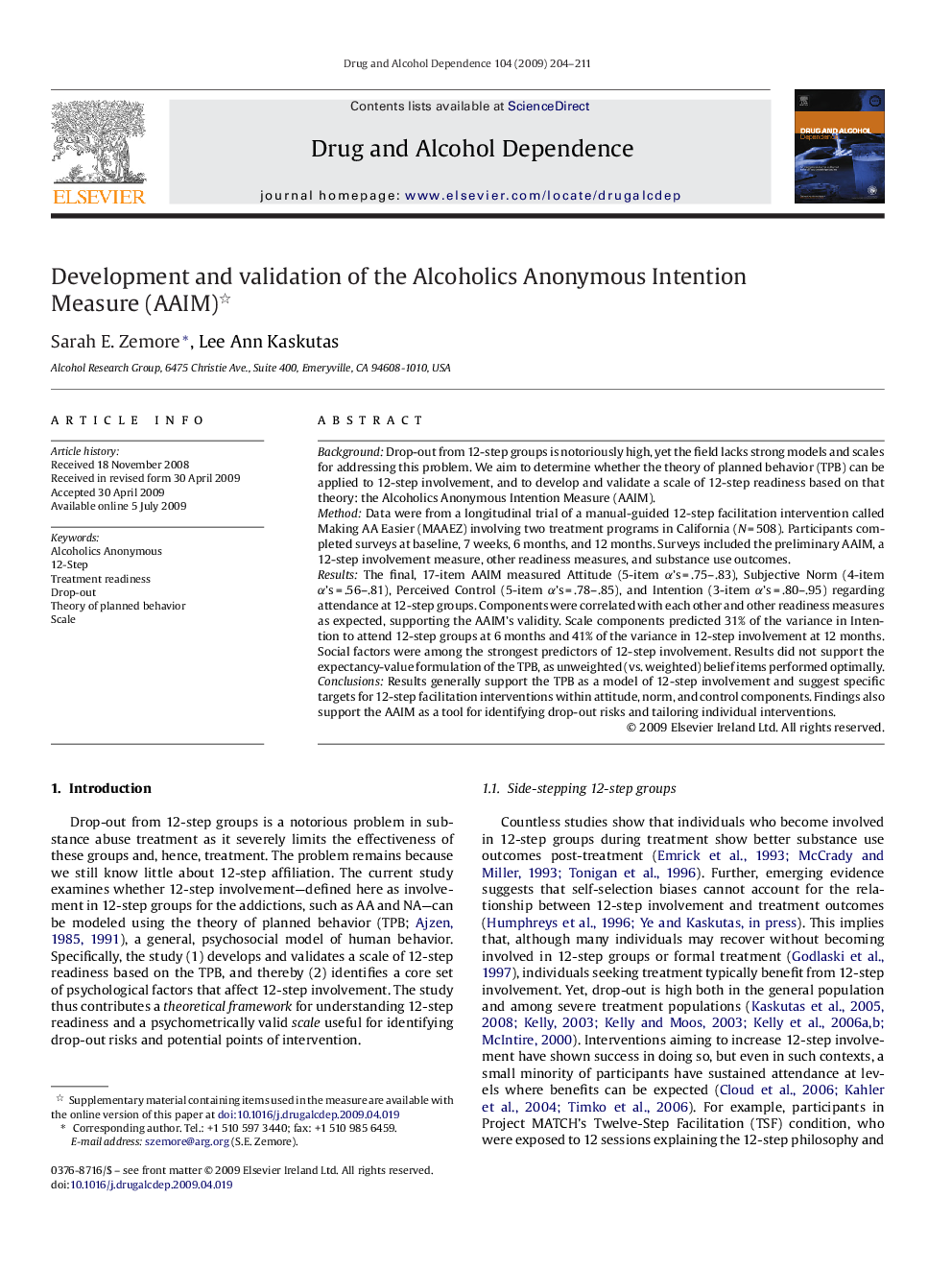| کد مقاله | کد نشریه | سال انتشار | مقاله انگلیسی | نسخه تمام متن |
|---|---|---|---|---|
| 1070722 | 949368 | 2009 | 8 صفحه PDF | دانلود رایگان |

BackgroundDrop-out from 12-step groups is notoriously high, yet the field lacks strong models and scales for addressing this problem. We aim to determine whether the theory of planned behavior (TPB) can be applied to 12-step involvement, and to develop and validate a scale of 12-step readiness based on that theory: the Alcoholics Anonymous Intention Measure (AAIM).MethodData were from a longitudinal trial of a manual-guided 12-step facilitation intervention called Making AA Easier (MAAEZ) involving two treatment programs in California (N = 508). Participants completed surveys at baseline, 7 weeks, 6 months, and 12 months. Surveys included the preliminary AAIM, a 12-step involvement measure, other readiness measures, and substance use outcomes.ResultsThe final, 17-item AAIM measured Attitude (5-item α’s = .75–.83), Subjective Norm (4-item α’s = .56–.81), Perceived Control (5-item α’s = .78–.85), and Intention (3-item α’s = .80–.95) regarding attendance at 12-step groups. Components were correlated with each other and other readiness measures as expected, supporting the AAIM's validity. Scale components predicted 31% of the variance in Intention to attend 12-step groups at 6 months and 41% of the variance in 12-step involvement at 12 months. Social factors were among the strongest predictors of 12-step involvement. Results did not support the expectancy-value formulation of the TPB, as unweighted (vs. weighted) belief items performed optimally.ConclusionsResults generally support the TPB as a model of 12-step involvement and suggest specific targets for 12-step facilitation interventions within attitude, norm, and control components. Findings also support the AAIM as a tool for identifying drop-out risks and tailoring individual interventions.
Journal: Drug and Alcohol Dependence - Volume 104, Issue 3, 1 October 2009, Pages 204–211